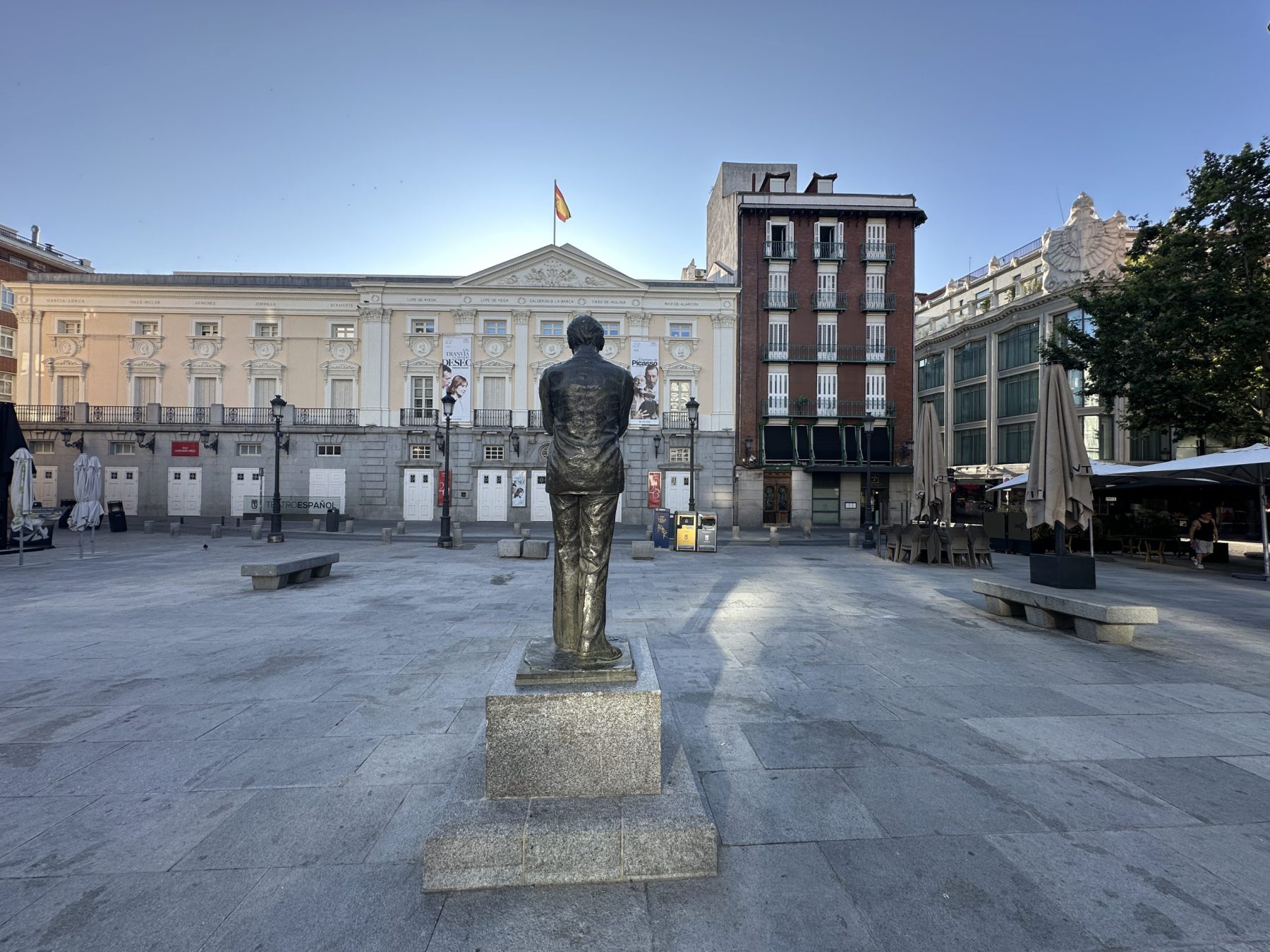Madrid doesn’t seem to get British attention in the same way the Spanish coast and coastal cities like Barcelona. Away from the beach and getting very warm in summer, it has an altogether more Spanish feel than the coastal resorts.
If you’re wanting Full English Breakfast and cheap lager it’s probably not the right place for you. But if you want to see Spanish culture and if you are interested in Spanish architecture for example, it could be.
Flights aren’t as cheap as the coast. Expect to pay a bit more and you may have to get a connecting flight depending on where you are coming from.
I flew through Schipol and my connections were tight. Fortunately passport control had a short connections lane and I was able to get my flight. Coming back was even tighter and I got to the gate only a few minutes before boarding. Ironically the flight was delayed so I needn’t have rushed.
Choosing where to stay, there are many options. I chose to stay centrally near Sol Plaza. Sol has very good connections to the rest of the city, both Metro and suburban railway. Coming from the airport I took the line 8 Metro into the city, then the C3 railway a stop to Sol Plaza. It wasn’t complicated – as easy as the London or Paris tube/metro.
You can opt for single trip, 10 trips or a tourist card for getting around the metro/rail/buses. I chose the tourist card as it covered all the trips I wanted to make. It was 32 euroes for 5 days and covered my various journeys: train, bus and Metro.
Sol is known as ‘the beating heart’ of Madrid and it’s certainly very lively from morning through till night. There are many places to eat or drink nearby and the El Corte Ingles department store has a supermarket in the basement where you can get some very nice Spanish food. There are some places to eat in there if you want to eat straight away.
The first place I visited was Retiro Park. A great park to the east of the centre. Many Spanish were using it early in the morning with lots of runners and dog walkers getting their exercise before the city heated up.
In summer the city does get very warm, reaching 36 degrees celsius while I was there. It’s best to explore the city in the morning, get some lunch, then siesta till around 6pm when it starts to cool and you can go back out again.
On the west side of the city lies the Palace de Real Madrid next to the main cathedral. This was the only area where I saw a lot of tourists. But it’s part of the city you will want to see for sure, and from the top of the cathedral dome you get 360 degree views of the city.
There are a number of plaza’s that are worth hunting out in the center. The Spanish eat and drink at the restaurants there. Plaza Mayor is particularly impressive.
There are many art galleries and museums to check out if that’s your thing. Prado is the best known gallery and opens at 10am. There are also many smaller galleries where you may find art or photography that interests you.
The Malasana district is one of the more fun parts of the city, with smaller shops and bars. More upmarket than it used to be, it is still worth visiting. Not as grand as some parts of the city, it has character.
Four nights in the city were enough to get a good feel for it, but you could stay longer for sure and see more. If you have even more time, there are day trips that you can make outside the wider Madrid area.
Madrid felt much more Spanish than some of the areas of Spain I’ve visited before and that was what I was hoping for. Even with just a few words of Spanish, Madridians were generally helpful and friendly to a solo British tourist.
